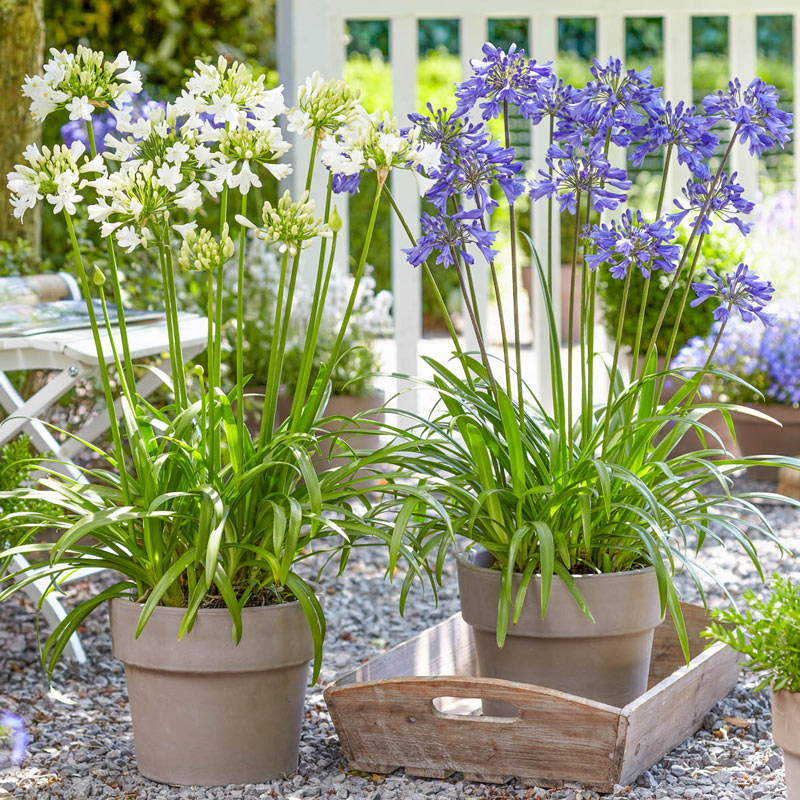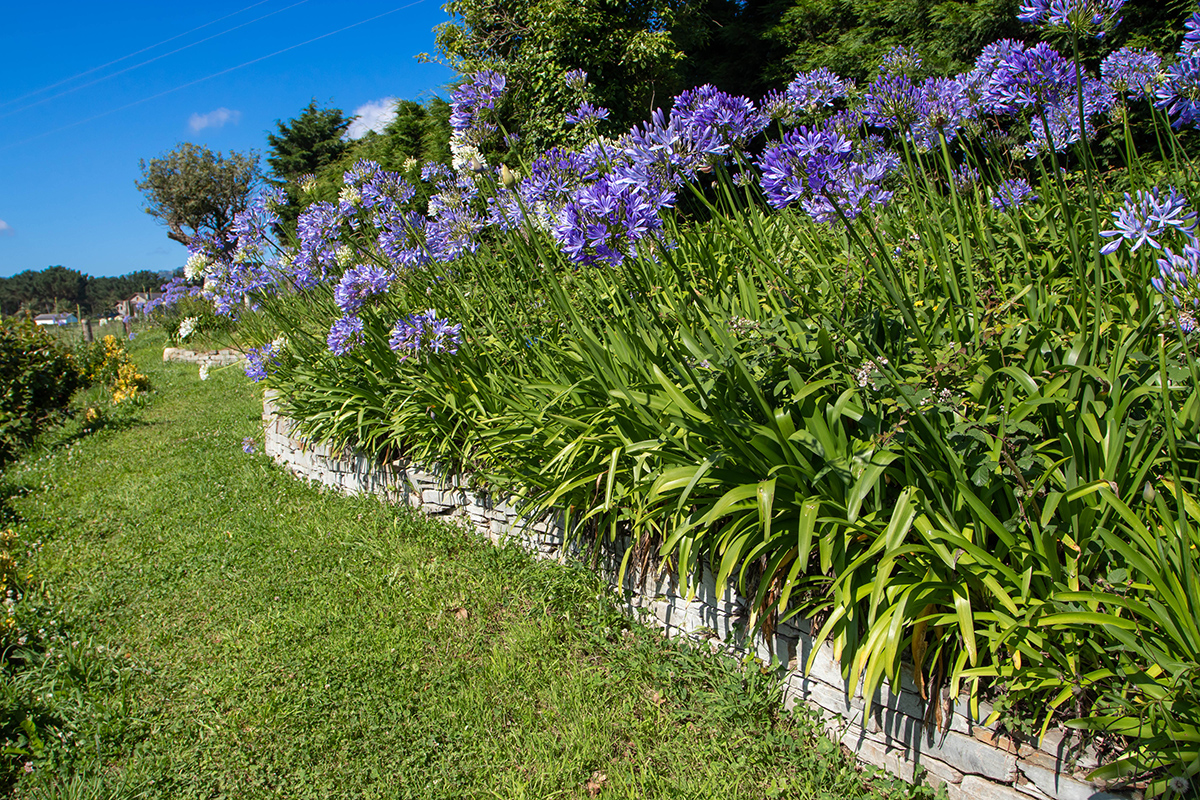Usual Agapanthus Troubles and Exactly How to Resolve Them
Usual Agapanthus Troubles and Exactly How to Resolve Them
Blog Article
Unleashing the Secret to Effective Agapanthus Growing: Advice for a Flourishing Yard
In the realm of horticulture, growing agapanthus efficiently needs a strategic strategy that includes numerous aspects of plant care. With careful focus to information, one can unlock the keys to supporting these spectacular blossoms, resulting in a yard that thrives with appeal and vibrancy. By understanding the nuances of agapanthus growing, one can produce an environment where these plants grow and flower abundantly. In the complying with discussion, we will certainly check out essential suggestions and methods that will certainly lead you in the direction of a growing agapanthus garden, providing understandings right into best techniques, dirt conditions, watering strategies, and much more.
Growing Agapanthus: Best Practices
When planting Agapanthus, appropriate dirt prep work is important for making certain successful growth and development of these lovely flowers. Agapanthus, generally recognized as Lily of the Nile or African lily, thrives in well-draining soil with a slightly acidic to neutral pH level - Agapanthus. Before planting, it is crucial to change heavy clay soils with natural issue such as garden compost or peat moss to enhance drainage and supply important nutrients for the plants
To grow Agapanthus, choose a place that receives full sunlight to partial shade, as this will advertise healthy and balanced development and bountiful blooming. Dig an opening twice the size of the plant's origin round and position the Agapanthus at the same depth it was previously growing. Gently backfill the hole with soil, weighing down firmly to get rid of any kind of air pockets around the origins.
Water the freshly grown Agapanthus extensively and remain to maintain the dirt uniformly damp, specifically throughout the plant's energetic expanding season. Agapanthus. Applying a balanced fertilizer once a month can additionally support the plant's growth and flowering. By adhering to these ideal methods for planting Agapanthus, you can develop a stunning display screen of these exciting blossoms in your garden
Ideal Dirt Conditions for Agapanthus
For optimum development and blooming success of Agapanthus plants, guaranteeing the dirt problems are optimal is crucial. Agapanthus prospers in well-draining soil with a somewhat acidic to neutral pH degree ranging from 6.0 to 7.0. This kind of dirt enables for ample water drain, preventing waterlogging which can cause root rot. To improve dirt water drainage, think about adding organic issue such as compost or peat moss when preparing the growing site. Moreover, Agapanthus favors soil that is abundant in nutrients, so integrating a balanced plant food during the expanding period can promote healthy and balanced growth and vibrant flowers.

Watering and Feeding Tips
To make sure healthy and balanced development and vivid blossoms, proper watering and feeding techniques are important for successful Agapanthus growing. Agapanthus plants gain from routine watering, especially throughout the expanding period. It is advised to water deeply when a week, making sure the dirt is damp but not waterlogged. Throughout heat or in pots, even more constant watering might be essential to stop the dirt from drying entirely.
When it concerns feeding Agapanthus, a well balanced plant food with equal components nitrogen, phosphorus, and potassium can be used in the spring to advertise healthy development and blooming. Slow-release fertilizers are ideal for giving nutrients slowly over an extended duration. Avoid over-fertilizing, as this can cause too much foliage development at the expenditure of blooms.
In addition, integrating raw material like garden compost right into the soil can enhance nutrient degrees and improve dirt structure, helping in the general health and wellness of the Agapanthus plants. By following these watering and feeding tips, garden enthusiasts can guarantee their Agapanthus plants flourish and generate spectacular display screens of blossoms.
Trimming and Deadheading Methods
Correct trimming and deadheading techniques play a crucial function in maintaining the wellness and aesthetic appeals of Agapanthus plants, matching the crucial practices of watering and feeding for effective cultivation. Pruning Agapanthus involves eliminating invested blossom heads, yellowing or dead leaves, and total shaping of the plant to advertise better growth. Deadheading, the procedure of removing faded blossoms, not just boosts the plant's look but also motivates additional growing.
When deadheading Agapanthus, it is a good idea to trim off the blossom stem at the base using sharp, clean read shears. This process reroutes the plant's power from seed manufacturing back into origin and vegetation growth, promoting a much healthier and extra durable plant. Routine deadheading can expand the growing duration of Agapanthus and prevent self-seeding, which can cause congestion.
In regards to trimming, Agapanthus usually take advantage of a light trim after blooming to tidy up the plant and motivate fresh development. Reducing the spent flower stems and getting rid of any kind of dead or broken vegetation assists preserve the plant's vigor and general appearance. However, it is necessary to prevent cutting into the crown of the plant, as this can damage its wellness.

Protecting Agapanthus From Pests and Diseases
Carrying out effective bug and disease administration strategies is essential to securing the health and vigor of Agapanthus plants in farming. One common bug that affects Agapanthus is the Agapanthus borer, a caterpillar that tunnels right into the plant, causing damages to the flowers and fallen leaves.
In addition to pests, Agapanthus are vulnerable to illness such as root read the article rot and fungal fallen leave spots. By staying alert and attending to insect and disease issues promptly, garden enthusiasts can aid their Agapanthus thrive and thrive.

Verdict
To conclude, successful cultivation of agapanthus needs proper growing techniques, suitable soil problems, appropriate watering and fertilizing, routine pruning and deadheading, and security from diseases and bugs. By complying with these techniques and pointers, gardeners can ensure a flourishing yard loaded with attractive agapanthus blooms. Agapanthus. Keep in mind to keep consistent care and attention to detail to promote the health and longevity of these sensational plants
When growing Agapanthus, appropriate dirt preparation is essential for making sure successful growth and growth of these stunning blossoms.Water the newly grown Agapanthus extensively and continue to maintain the soil uniformly wet, especially during the plant's active growing period.For optimal growth and blooming success of Agapanthus plants, making sure the dirt conditions are optimal is vital. helpful site When growing or hair transplanting Agapanthus, make sure the soil is well-prepared to supply the essential foundation for the plants to develop themselves effectively. One typical parasite that influences Agapanthus is the Agapanthus borer, a caterpillar that tunnels into the plant, creating damage to the leaves and flowers.
Report this page